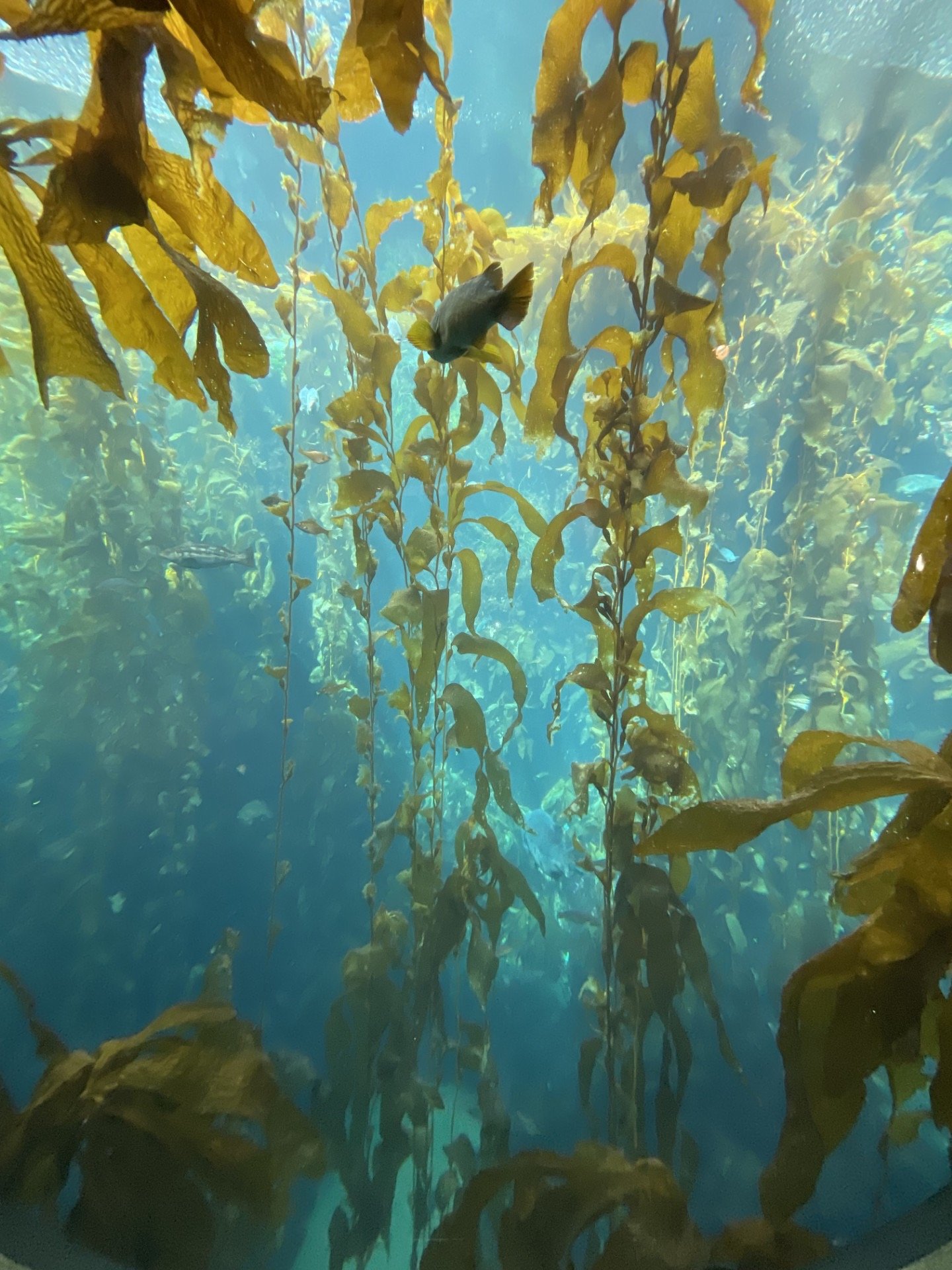Swaying rhythmically beneath the surface of the ocean, towering columns of proliferating brown algae, known as kelp, up to 200 feet tall form a sanctuary for species such as fish, invertebrates and marine mammals.
This magnificent underwater world not only offers a source of enchantment for divers. It also serves as a paradigm for biodiversity, provides many ecosystem services and could unlock key advances in the fight against climate change, according to Stanford scientists.
“Kelp are tightly coupled to everything you could think of in the coastal ocean in terms of the carbon cycle, productivity and creating a habitat,” said Larry Crowder, a professor of marine ecology and conservation at Hopkins Marine Station in Monterey Bay. “People around the world talk about corals as an iconic habitat. But in many parts of the world, it’s kelp.”
Found in subtidal regions with temperate upwelling ecosystems across the globe, kelp forests offer breathtaking habitat along the California coastline and Monterey Bay in particular, where they cover 25 square miles of the ocean floor. Two species predominate along the West Coast: giant kelp, which is more common in southern latitudes, and bull kelp, which is more prevalent in northern latitudes.
Pioneering technology to monitor nearshore kelp ecosystems
The Kelp Forest Array (KFA) was established in 2015 at Hopkins as an underwater research node collecting high-resolution data to provide baseline monitoring of the impact of global warming and human activities on Monterey’s kelp forests. Positioned in the sand channel intersecting the kelp forest, the KFA is composed of a cable wired with sensors on an array, providing measurements that connect back to sensors on land.
“The KFA was [established] to enable a targeted sampling if there were interesting physical conditions,” said Steven Monismith, a professor of oceans. “Typically, the fish sampling conducted at any given site is only several times a year. The question was, ‘what if we sampled every day at somewhere like Hopkins?’”
Monismith also established an underwater tower attached to turbulence systems to monitor internal waves, which represent the interface between the cold upper layers and warmer depths of the ocean.
Benefits of kelp
Kelp forests help to maintain vital marine ecosystems, safeguard coastal property and contribute to individuals’ livelihoods and the worldwide economy, offering billions of dollars in ecosystem services, protection benefits and commercial revenue globally.
The drag created by kelp provides habitat for marine species by slowing ocean currents, a phenomenon that also leads to decreased wave action onshore and less erosion. When kelp separates from its holdfast, the kelp paddies that are formed provide a microhabitat for species such as sharks.
“When you have millions of species to study, it’s useful to study the ones that provide a foundation for many other species,” said Robin Elahi, an advanced lecturer at Hopkins.
Kelp forests have also been sacred for Indigenous groups for thousands of years. “In British Columbia, herrings spawn and lay their eggs on kelp blades, and that is really important for the Haida people,” Elahi said.
Role of kelp in mediating ocean acidification
Atmospheric carbon dioxide is often absorbed by the planet’s oceans, leading to acidification. In a 2020 study, a team of Stanford researchers found that kelp forests could potentially sequester carbon dioxide, given that kelp absorbs large amounts of carbon dioxide during photosynthesis.
While kelp forests cover less than one percent of the ocean floor, they are responsible for absorbing 4.5 million tons of carbon dioxide annually.
“Kelp forests can sequester a lot of carbon dioxide and turn it into kelp biomass,” Crowder said.
Threats
Over the past few decades, kelp forests have rapidly declined in surface area, both along the U.S. West Coast and worldwide.
Overharvesting is caused by the proliferation of marine grazers such as urchins and fishes. Grazer populations are typically kept in check by predators such as fish, invertebrates and otters, but overfishing has reduced the number of predators. Commercial harvest also threatens kelp, especially as demand for kelp products increases.
Since kelp requires colder water to survive, rising seawater temperatures present a severe threat by causing changes in upwelling. El Niño southern oscillation (ENSO) events, exacerbated by climate change, also endanger kelp.
“Kelp exists in upwelling regions where there is nutrient availability,” Monismith said. “When you lose upwelling, you a) lose cold water and b) lose nutrients.”
Watershed development, excessive sedimentation, and pollution from various sources, including sewage, industrial waste, inorganic fertilizers and pesticides, also threaten kelp growth.
“It’s a sequence of things that are all kind of connected to each other, and that makes it tough to untangle,” Monismith said.
Diving among kelp forests
To introduce students to the vibrancy of kelp, Elahi teaches a 5-week course on kelp forest ecology at Hopkins that trains students to become certified scientific divers and to identify and quantify different species within kelp forests.
“The class is unique in that it focuses on a very important local ecosystem,” Elahi said. “It’s nice to be able to go to a coral reef and learn about that ecosystem. But why do that when you can go to the kelp forests, which are right here, and are really important for us?”
Using video and in-situ surveys, Elahi and his students conduct long-term monitoring of kelp and other species to document ecological trends over time — producing ecological surveys that have been recorded continuously for over thirty years.
“It’s important to make the kelp forest accessible to people who can’t dive necessarily,” Elahi said. “They are iconic ecosystems that draw in a lot of people to marine science.”
